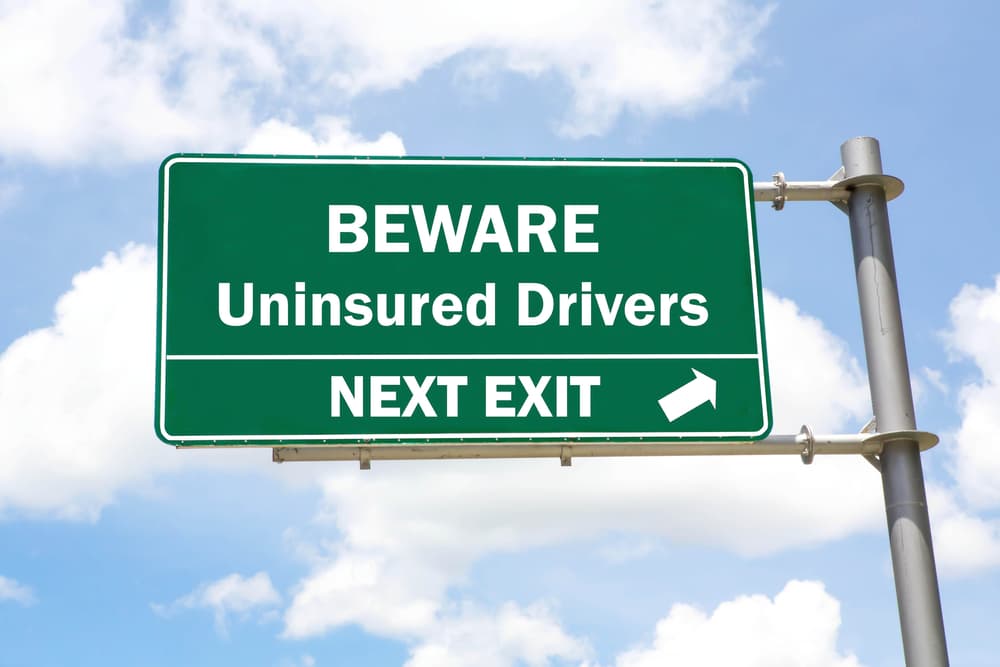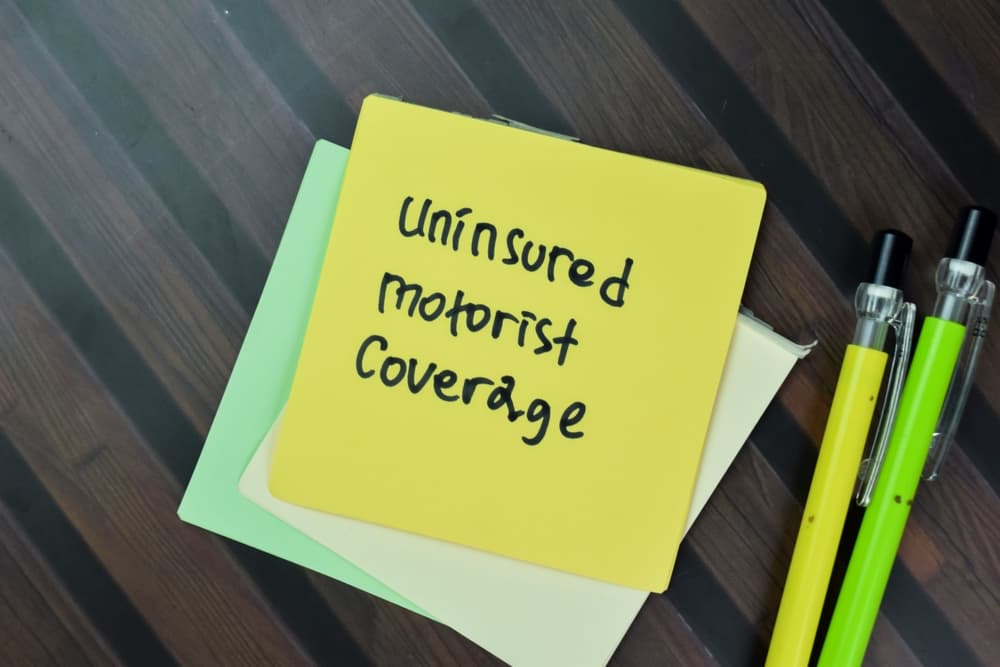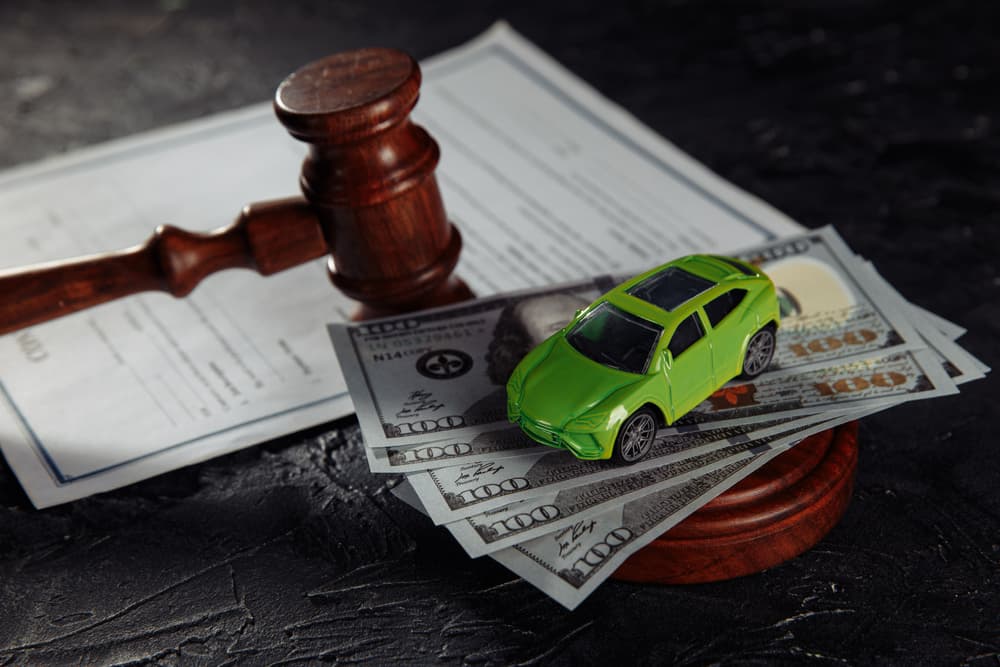Car accidents typically happen when other drivers commit traffic law violations or drive in a reckless or distracted manner. When negligent drivers cause accidents, injured accident victims may be eligible to pursue a claim against the at-fault driver’s policy. But what happens if the at-fault driver does not have sufficient insurance coverage available to compensate for the victim’s losses? In those circumstances, the victim may need to pursue an underinsured motorist claim – or UIM claim – under their own policy.
In a UIM claim, the injured accident victim first exhausts the at-fault party’s policy limits of coverage. They can then turn to their own UIM policy for additional compensation.
If you suffered injuries in a car crash that an underinsured motorist caused, a skilled car accident attorney can determine your eligibility for pursuing a UIM claim or lawsuit. Your lawyer can then take the necessary steps on your behalf to recover the full compensation you deserve.
Types of Car Accidents that Underinsured Motorists May Cause

Car accidents that result from negligent, underinsured motorists come in various forms, each with its own set of dangers and potential for serious injury. Here are the main types of accidents that these drivers may cause:
- Rear-End Collisions – One common type of accident is the rear-end collision. These occur when a negligent driver fails to stop in time and crashes into the vehicle in front. This often happens due to distracted driving, such as texting or not paying attention to the road.
- T-Bone or Side-Impact Collisions – These accidents happen when one vehicle crashes into the side of another. They usually occur at traffic intersections when a driver runs a red light or fails to yield the right-of-way. Side-impact collisions can be particularly dangerous because the sides of vehicles have less structural support than the front or rear, leading to significant injuries for the passengers on the struck side.
- Head-On Collisions – Perhaps the most deadly type of accident, head-on collisions occur when two vehicles collide front to front. These often happen because a negligent driver is impaired by alcohol or drugs, falls asleep at the wheel, or is driving recklessly by crossing the center line. The forces involved in head-on collisions are massive, leading to severe injuries or fatalities.
- Sideswipe Collisions – These accidents occur when two vehicles travelling in the same direction collide side by side. They can happen when a driver fails to check their blind spot or drifts out of their lane due to inattention or impairment. While often less severe than head-on or T-bone collisions, sideswipes can still cause drivers to lose control, leading to more serious crashes.
Each type of accident poses unique risks and challenges for injured accident victims. The lack of adequate insurance coverage from negligent drivers further complicates recovery for victims. In these circumstances, an experienced car accident lawyer can determine eligibility for filing a UIM claim for additional compensation.
Common Injuries in Car Crashes that Result from an Underinsured Motorist’s Negligence
Injuries in car accidents resulting from negligent, underinsured motorists can be severe and life-changing. When these drivers cause accidents, their lack of adequate insurance complicates the process of getting proper compensation for lost income, pain and suffering, and other damages. Here are some common injuries that victims may suffer in these collisions:
- Whiplash and Neck Injuries – Whiplash is a common injury in car accidents – especially in rear-end collisions. It occurs when the victim’s head is suddenly jerked forward and then snapped back, straining the neck muscles and ligaments. Symptoms frequently include neck pain, stiffness, and headaches, which can last for weeks or even months.
- Back and Spinal Cord Injuries – The force of a car crash can lead to serious back injuries, including herniated discs and spinal fractures. In more severe cases, a spinal cord injury can result in partial or complete paralysis. These injuries often require extensive medical treatment, rehabilitation, and sometimes lifelong medical care and rehabilitation.
- Head and Brain Injuries – Traumatic brain injuries (TBIs) are among the most serious consequences of car accidents. A TBI can occur when the victim’s head strikes an object inside the vehicle – like the steering wheel or window – or when the brain is violently shaken inside the skull. Symptoms range from concussions to comas and other types of severe brain damage, which can affect the victim’s memory, cognition, and personality.
- Broken Bones and Fractures – The force of a car collision can also cause bones to break or fracture – especially in the arms, wrists, knees, ankles, and legs. Broken bones can be incredibly painful and may require surgery, immobilization, and physical therapy for proper healing.
- Internal Injuries – Car accidents can also cause internal injuries, such as organ damage or internal bleeding. These injuries are not always immediately apparent and can be life-threatening if the victim does not receive prompt medical care.
- Cuts and Lacerations – Broken glass and debris from the crash can cause deep cuts and lacerations. While some may be minor, others can lead to significant blood loss and scarring, requiring stitches or surgery.
Beyond physical harm, car accidents can result in emotional and psychological trauma. Victims may experience anxiety, depression, or post-traumatic stress disorder (PTSD), which can affect their daily lives and require ongoing mental health treatment.
When an underinsured motorist causes these injuries, victims can file a UIM claim or lawsuit after first exhausting the at-fault driver’s policy limits of coverage.
What are the Steps to Filing an Underinsured Motorist Claim?
Filing a UIM claim after an accident involves several crucial steps to ensure that you receive the compensation you need. Here’s a step-by-step guide to help you navigate the process:
- Report the Accident and Obtain a Copy of the Police Report – As soon as the accident occurs, call the police to report it. Having an official police report is essential as it provides an objective account of the incident, which can be useful when filing your claim. Make sure to get a copy of this report.
- Gather Information – Collect as much information as possible. This includes taking photos of the accident scene and any visible injuries.
- Seek Ongoing Medical Attention – Follow through with all medical treatment recommendations from your healthcare providers. Medical records will be crucial evidence in your claim.
- Seek Experienced Legal Counsel – A skilled car accident lawyer can handle every step of the claims filing, settlement negotiation, and litigation processes for you.
- Notify Your Insurance Company – Your lawyer may contact your insurance company and inform them that you intend to file a UIM claim. The insurance company will then provide your lawyer with the necessary forms and instructions.
- File a Claim with the At-Fault Driver’s Insurance Company – Before filing a UIM claim, your lawyer must first file a claim with the at-fault driver’s insurance company. Once you receive a settlement offer, if it’s insufficient to cover your damages, you can then proceed with your UIM claim.
- Submit a UIM Claim – Your lawyer will need to submit a UIM claim with your own insurance company and provide them with all of the documentation you’ve gathered, including the police report, medical records, photos, and any communication with the at-fault driver’s insurer.
- Negotiate the Claim – Your insurance company will investigate the claim and may offer a settlement. If the initial offer doesn’t cover all of your expenses, then your lawyer can negotiate the claim on your behalf. Your lawyer may also need to provide additional evidence or documentation to support the claim.
- Resolve the Claim – Once an agreement is reached, your insurance company will issue a payment. Review the settlement carefully with your lawyer and ensure that it covers all of your expenses before accepting it.
- Litigate if Necessary – If your insurance company refuses to compensate you fairly, then your lawyer can litigate the case in court.
By following these steps, you can effectively file a UIM claim and secure the compensation you need to recover from the accident.
Settling or Litigating an Underinsured Motorist Claim

Deciding whether to settle or litigate a UIM claim is a significant decision that can affect the outcome of your compensation. Here’s a guide to help you weigh your options:
- Understanding Settlements – Settling a UIM claim means you agree to accept a payment from your insurance company to cover your damages. Settlements are often quicker and less stressful than going to court. They can be beneficial if you need money promptly for lost income and other expenses. However, settlements may offer less compensation than what you may potentially receive through litigation.
- Evaluating the Insurance Company’s Offer – Carefully review the settlement offer from your insurance company with your lawyer. Consider whether the amount adequately covers your lost income and any pain and suffering. If the offer is fair and meets your needs, settling may be the best option.
- Considering Litigation – Litigation involves taking your case to court to seek a higher compensation amount. This process can be lengthy and complicated, often taking months or even years to resolve. However, if your insurance company’s offer is significantly lower than what you need or deserve, litigation may be worth pursuing.
- Weighing the Risks and Benefits – Litigation can result in a higher payout, but it also comes with risks. You may not win your case, and legal fees can reduce your final compensation. Additionally, the process can be stressful and time-consuming. Evaluate whether the potential benefits outweigh these risks.
- Making an Informed Decision – Base your decision on the specifics of your case, the advice of your lawyer, and your personal circumstances. If you have strong evidence and your lawyer believes that you have a good chance of winning in court, litigation may be the best route. However, if you need a quicker resolution and the settlement offer is reasonable, settling the case may be more advantageous.
- Future Implications – Consider the long-term effect of your decision. Ensure that the compensation you receive, whether through settlement or litigation, will cover any long-term effects of your injuries.
When it comes to settlement versus litigation, a knowledgeable car accident lawyer can help you make the best choice for your situation.
Recoverable Compensation in an Underinsured Motorist Claim or Lawsuit

When you file a UIM claim or lawsuit, you can seek several types of recoverable compensation to cover the damages you’ve suffered. Here are the main types of compensation available to injured accident victims:
- Lost Wages – If your injuries prevent you from working, you can seek compensation for lost income. This includes the income you’ve already lost while recovering and any future earnings you may lose if your injuries result in long-term or permanent disability.
- Pain and Suffering – Pain and suffering compensation addresses the physical pain and emotional distress resulting from the accident and your injuries. This type of compensation is more subjective and can vary widely depending on the severity of your injuries and their overall effect on your life.
- Loss of Consortium – If the accident has affected your relationship with your spouse, you may be eligible for loss of consortium compensation. This covers the loss of companionship, affection, and support due to your injuries.
- Disability and Disfigurement – If the accident results in a permanent disability or disfigurement, such as paralysis, you can seek additional compensation. This covers the effect on your quality of life, including any limitations on your ability to perform everyday activities or enjoy hobbies and interests.
- Emotional Distress – Besides physical pain, car accidents can cause significant emotional and psychological harm. Compensation for emotional distress covers issues like anxiety, depression, and post-traumatic stress disorder (PTSD) that arise from the accident.
- Punitive Damages – In some cases, if the at-fault driver’s behaviour was particularly reckless or egregious, you may be awarded punitive damages. These damages are necessary to punish the negligent party and deter similar behaviour in the future.
Consulting with an experienced car accident lawyer can further help in accurately assessing and pursuing these damages.
Speak with an Experienced Car Accident Lawyer Today
If you suffered injuries in a car crash where the at-fault driver lacked sufficient insurance coverage, it’s important that you consult with a reputable personal injury law firm in Edmonton right away. Your lawyer can promptly determine your eligibility for filing a UIM claim or lawsuit and take the steps necessary to maximize your compensation award.
